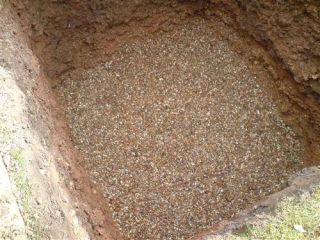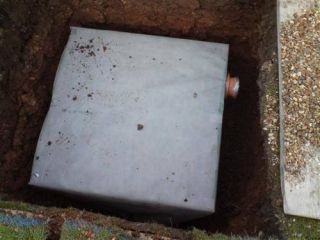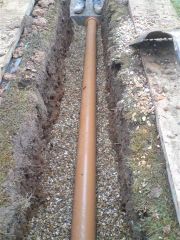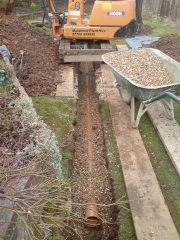How to construct or install a soakaway-
Soakaways are often used in rural areas where a storm drain has not been provided by the local water company. The rain water should not go into the sewer as this can cause severe problems during storms as it can lead to massive surges at the sewerage treatment works, for this reason the only option is to construct or install a soakaway.
A soakaway will be successful depending on the surrounding soil and so for example if it is to be built in a area that contains lots of clay then it may not work so well. It may also not be successful if you have a high water table.
The old way of building a soakaway was to fill it with loose rubble and cap it off, but now there are much better products on the market!
Firstly you need to contact your local building control officer and take advice about the soakaway and ensure that all current regulations are adhered to-
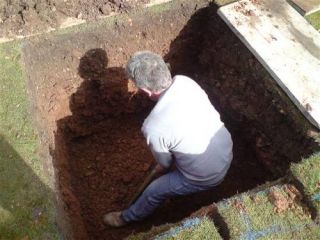
The hard bit is digging the hole, this hole is 1200mm x 1200mm x 1500mm deep. Care should be taken when digging holes and special attention should be given to the sides of the hole being dug. If you are in any doubt about the firmness of the surrounding soil, there could be a danger of collapse and so extreme caution needs to be taken.
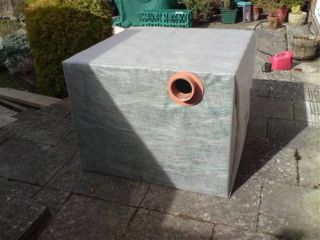
Take 4 Aquacell, clip them together and wrap in Terram permeable membrane and connect pipe inlet. Total dimensions 1000w x 1000d x 800h
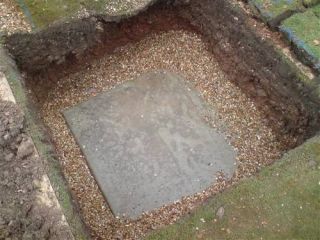
Fill with further pea gravel and await a building inspector to pass. After inspection and connection of the pipe work you can back fill the hole and relay the turf.
Article written by Darrenba



